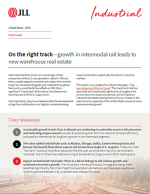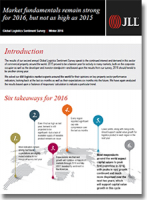Growth in Intermodal Rail Leads to New Warehouse Real Estate
Trucking is by far the predominant mode of shipping in the U.S., but it has its constraints, from driver shortages to escalating costs and roadway congestion, and while freight matching technology is improving, it also has helped the intermodal industry move into its next evolution as well.
Why Intermodal?
Intermodal facilities remain an increasingly critical component of the U.S. transportation network.
Without them, coastal seaport connections to major cities and the long-haul movement of goods and materials throughout the country would be far less effective.
With them, significant “inland port” destinations have become an essential part of the U.S. supply chain.
And importantly, they have helped enable the development of significant distribution and logistics real estate along major rail corridors, specifically the top U.S. industrial markets.
The inland port role has advanced and modernized significantly throughout the current economic expansion period, and its impact on industrial real estate development will only increase in the years to come, especially if the United States moves to more export-oriented growth.
What's in this Report?
Trucking is by far the predominant mode of shipping in the U.S., but it has its constraints – from driver shortages to escalating costs and roadway congestion.
While freight matching technology is improving, it also has helped the intermodal industry move into its next evolution as well.
In addition to these points, this white paper discusses:
- How the intermodal industry continues to evolve – helping keep transportation costs low, curbing emissions and creating new linkages between cities to create a more efficient U.S. supply chain.
- Where re-shoring, on-shoring, and near-shoring will create opportunities for continued warehouse & distribution development and leasing – both for imports as well as for exports.
- Where the major inland port destinations are – and how they are connected via intermodal rail networks.
What’s Related




Favorites





